- Home
- Ernest Hemingway
By-Line Ernest Hemingway Page 33
By-Line Ernest Hemingway Read online
Page 33
Chinese Build Air Field
PM • JUNE 18, 1941
MANILA.—Nelson Johnson, the last U.S. Ambassador to Chungking, who lived in China so long that he talked like an elder Chinese statesman and who never took a view shorter than 3000 years, told me as we stood looking out from the new spring green of the U.S. Embassy terrace across the fast running Yangtze River to the rising bulk of the terraced, gray, bomb-spattered, fire-gutted, grim stone island that is China’s war-time capital:
“China can do anything that China wants to do.”
At the time this remark irritated me profoundly. Unlike Mr. Johnson, I had never seen the Great Wall and I suppose I could not think of it as something that had been built just a few days or years before. I was thinking in immediate terms: how much money it would cost to tie up how many Japanese divisions in China; what were the offensive possibilities for the Chinese Army; could friction between the Communists and the Kuomintang be reduced so they found again a common basis for fighting against Japan; how many planes were needed before China could take the offensive and who would fly them; how many pieces of artillery were absolutely necessary and how were they to be got in; and how many gunner officers were fit to handle them when and if they were got in; and about several other things.
When Mr. Johnson brought that remark up out of the depth of his learning I was moderately appalled. It did not seem to help much on the immediate solution of many grave problems. Two days later I flew up to Chengtu in north Szechwan Province where the caravans come down from Tibet and you walk past yellow and red lamas in the dust-deep streets of the old high-walled city; the dust blowing gray in clouds with the cold wind down from the snowy mountains and you have to wear a handkerchief over your face and step into a silver-beater’s shop as the caravans pass. Up there in the north I found out what Mr. Johnson meant, and I saw something that made me know what it would have been like to have ridden some early morning up from the south out of the desert and seen the great camp and the work that went on when men were building on the pyramids.
It started with the Generalissimo talking about Flying Fortresses. With some of those big four-motor Boeings the Chinese could fly over Japan at an altitude where neither Japanese antiaircraft nor pursuit could bother them and bring to Japan the horror that she had spread through China in the past four years. There were no Chinese who were qualified to be checked out on a Flying Fortress as pilots, but none of those present brought that up. That was a thing which could presumably be arranged later. Someone did point out, though, that there was not a single airfield in China which could handle a Boeing B17.
At this point in the conversation the Generalissimo made a note.
“What do they weigh?” he asked.
“Around 22 tons,” someone told him with more or less accuracy.
“Not over that?” asked the Generalissimo.
“No. But I will check.”
The next day the construction of the airfield began.
Chen Loh-kwan, 38-year-old engineering graduate of the University of Illinois and chief of the Engineering Department of the Aeronautical Commission, was ordered to complete an airfield ready to receive Flying Fortresses on March 30. There was an “or else” added to the order, but Chen Loh-kwan has built so many airfields in a hurry for the Generalissimo that if they ever “or elsed” him it would be probably much the simplest solution to the hundreds of thousands of problems he has solved and has to go on solving. He never worries about “or elses.”
He had from January 8 to March 30 to build an airfield with a runway a mile and an eighth long by a little over 150 yards wide with a stone-filling and top dressing macadam runway five feet deep to support the giant bombers when they land or take off.
Chen Loh-kwan’s task was to level a 1000-acre field without tools; first removing 1,050,000 cubic meters of earth by hand and transporting it in baskets an average distance of half a mile. He built his runway with a yard deep layer of stone, then a layer of watered earth, then another layer of stone. This stone was all hauled in baskets from the bed of a river which flowed along from half a mile to a mile away. This runway foundation was surfaced with three layers. One was a layer of boulders set in lime mortar. Above this was a layer of lime concrete. On top of it all, in a billiard-table-rolled-smooth surface, was an inch and a half of broken stone clay bound covered with one inch of coarse sand.
There is blind drainage all around the edge of the runway which will support, when I saw it, five tons of load per square foot and will handle bombers as big as the new B19.
Chen Loh-kwan built—that is he built moulds for rollers and poured them—150 three-and-a-half- to ten-ton concrete rollers to smooth off this job. They were all pulled by manpower. One of the finest things I ever saw was that manpower pulling.
He brought in water in two ditches from ten miles away to parallel the runway during the construction to save hauling water. The workers mixed all the concrete by puddling it with their feet.
Sixty thousand workers at one time were hauling the 220,000 cubic meters of gravel from eight miles along the river. Thirty-five thousand more workers were crushing stone with hand hammers. There were 5000 wheelbarrows in use at a time and 200,000 baskets slung on carrying sticks. Every carrying stick was bent to breaking point under a double load as the men worked 12-hour shifts.
The Governor of Szechwan Province provided Chen Loh-kwan with 100,000 workers. They came in bands of 800 from the 10 different counties of the province. Some had to march 15 days from their homes. They were paid on the basis that a man can cut up to a meter and a quarter of earth a day. This was adjudged to be worth 40 ounces of rice. The man working received three-fifths of this in rice and the balance in cash. It worked out to about $2.30 a day Chinese, or $1 a day Chinese and rice.
The first I saw of the workers was a cloud of dust coming down the road with a ragged, torn-clothed, horny-footed, pock-faced army marching in the blowing dust singing as they plodded with their torn flags snapping in the wind.
We passed another band that jammed a village as they sang, boasted, and bought food for the night and then we came up on a rise and saw the field.
Looking across the great, stretching earth-leveled expanse, it looked at first like some ancient battlefield with the banners waving and the clouds of dust rolling where 80,000 men were toiling. Then you could make out the long cement-whitening mile-and-an-eighth runway and the 100-man teams that were rolling it smooth as they dragged the 10-ton rollers back and forth.
Through all the dust, the clicking of breaking rock and the hammering, there was a steady undertone of singing as of surf breaking on a great barrier reef.
“What is that song?” I asked.
“It is only what they sing,” the engineer told me. “It is a song they sing that makes them happy.”
“What does it say?”
“It says that they work all day and all night to do this. They work all day and all night. The rock is big. They make it small. The earth was soft. They make it hard.”
“Go on,” I said.
“The field was uneven and they make it smooth. They make the runway smooth as metal and the rollers are light to their shoulders. The roller has no weight because all men pull it together.”
“What do they sing now?”
“Now we have done what we can do. Now come the Flying Fortresses. Now-we-have-done-what-we-can-do! Now-come-the-Flying-Fortresses!”
“You can send somebody who can fly them,” an engineer said.
He was a very practical man, used to building airfields without tools and with no false illusions.
“You see,” he looked across at the wind-blowing glory of the field where the singing was beating like surf, “there are certain things that we can do ourselves.”
It was close to the end of the deadline and the field would be ready on the date that had been set.
Voyage to Victory
Collier’s • JULY 22, 1944
NO ONE remembers the date o
f the Battle of Shiloh. But the day we took Fox Green beach was the sixth of June, and the wind was blowing hard out of the northwest. As we moved in toward land in the gray early light, the 36-foot coffin-shaped steel boats took solid green sheets of water that fell on the helmeted heads of the troops packed shoulder to shoulder in the stiff, awkward, uncomfortable, lonely companionship of men going to a battle. There were cases of TNT, with rubber-tube life preservers wrapped around them to float them in the surf, stacked forward in the steel well of the LCV(P), and there were piles of bazookas and boxes of bazooka rockets encased in waterproof coverings that reminded you of the transparent raincoats college girls wear.
All this equipment, too, had the rubber-tube life preservers strapped and tied on, and the men wore these same gray rubber tubes strapped under their armpits.
As the boat rose to a sea, the green water turned white and came slamming in over the men, the guns and the cases of explosives. Ahead you could see the coast of France. The gray booms and derrick-forested bulks of the attack transports were behind now, and, over all the sea, boats were crawling forward toward France.
As the LCV(P) rose to the crest of a wave, you saw the line of low, silhouetted cruisers and the two big battlewagons lying broadside to the shore. You saw the heat-bright flashes of their guns and the brown smoke that pushed out against the wind and then blew away.
“What’s your course, coxswain?” Lieutenant (jg) Robert Anderson of Roanoke, Virginia, shouted from the stern.
“Two-twenty, sir,” the coxswain, Frank Currier of Saugus, Massachusetts, answered. He was a thin-faced, freckled boy with his eyes fixed on the compass.
“Then steer two-twenty, damn it!” Anderson said. “Don’t steer all over the whole damn’ ocean!”
“I’m steering two-twenty, sir,” the coxswain said patiently.
“Well, steer it, then,” Andy said. He was nervous, but the boat crew, who were making their first landing under fire, knew this officer had taken LCV(P)s in to the African landing, Sicily and Salerno, and they had confidence in him.
“Don’t steer into that LCT,” Andy shouted, as we roared by the ugly steel hull of a tank landing craft, her vehicles sea-lashed, her troops huddling out of the spray.
“I’m steering two-twenty,” the coxswain said.
“That doesn’t mean you have to run into everything on the ocean,” Andy said. He was a handsome, hollow-cheeked boy with a lot of style and a sort of easy petulance. “Mr. Hemingway, will you please see if you can see what that flag is over there, with your glasses?”
I got my old miniature Zeiss glasses out of an inside pocket, where they were wrapped in a woolen sock with some tissue to clean them, and focused them on the flag. I made the flag out just before a wave drenched the glasses.
“It’s green.”
“Then we are in the mine-swept channel,” Andy said. “That’s all right. Coxswain, what’s the matter with you? Can’t you steer two-twenty?”
I was trying to dry my glasses, but it was hopeless the way the spray was coming in, so I wrapped them up for a try later on and watched the battleship Texas shelling the shore. She was just off on our right now and firing over us as we moved in toward the French coast, which was showing clearer all the time on what was, or was not, a course of 220 degrees, depending on whether you believed Andy or Currier the coxswain.
The low cliffs were broken by valleys. There was a town with a church spire in one of them. There was a wood that came down to the sea. There was a house on the right of one of the beaches. On all the headlands, the gorse was burning, but the northwest wind held the smoke close to the ground.
Those of our troops who were not wax-gray with seasickness, fighting it off, trying to hold onto themselves before they had to grab for the steel side of the boat, were watching the Texas with looks of surprise and happiness. Under the steel helmets they looked like pikemen of the Middle Ages to whose aid in battle had suddenly come some strange and unbelievable monster.
There would be a flash like a blast furnace from the 14-inch guns of the Texas, that would lick far out from the ship. Then the yellow-brown smoke would cloud out and, with the smoke still rolling, the concussion and the report would hit us, jarring the men’s helmets. It struck your near ear like a punch with a heavy, dry glove.
Then up on the green rise of a hill that now showed clearly as we moved in would spout two tall black fountains of earth and smoke.
“Look what they’re doing to those Germans,” I leaned forward to hear a G.I. say above the roar of the motor. “I guess there won’t be a man alive there,” he said happily.
That is the only thing I remember hearing a G.I. say all that morning. They spoke to one another sometimes, but you could not hear them with the roar the 225-horsepower high-speed gray Diesel made. Mostly, though, they stood silent without speaking. I never saw anyone smile after we left the line of firing ships. They had seen the mysterious monster that was helping them, but now he was gone and they were alone again.
I found if I kept my mouth open from the time I saw the guns flash until after the concussion, it took the shock away.
I was glad when we were inside and out of the line of fire of the Texas and the Arkansas. Other ships were firing over us all day and you were never away from the sudden, slapping thud of naval gunfire. But the big guns of the Texas and Arkansas that sounded as though they were throwing whole railway trains across the sky were far away as we moved on in. They were no part of our world as we moved steadily over the gray, white-capped sea toward where, ahead of us, death was being issued in small, intimate, accurately administered packages. They were like the thunder of a storm that is passing in another county whose rain will never reach you. But they were knocking out the shore batteries, so that later the destroyers could move in almost to the shore when they had to come in to save the landing.
• • •
Now ahead of us we could see the coast in complete detail. Andy opened the silhouette map with all the beaches and their distinguishing features reproduced on it, and I got my glasses out and commenced drying and wiping them under the shelter of the skirts of my burberry. As far as you could see, there were landing craft moving in over the gray sea. The sun was under at this time, and smoke was blowing all along the coast.
The map that Andy spread on his knees was in ten folded sheets, held together with staples, and marked Appendix One to Annex A. Five different sheets were stapled together and, as I watched Andy open his map, which spread, open, twice as long as a man could reach with outstretched arms, the wind caught it, and the section of the map showing Dog White, Fox Red, Fox Green, Dog Green, Easy Red and part of Sector Charlie snapped twice gaily in the wind and blew overboard.
I had studied this map and memorized most of it, but it is one thing to have it in your memory and another thing to see it actually on paper and be able to check and be sure.
“Have you got a small chart, Andy?” I shouted. “One of those one-sheet ones with just Fox Green and Easy Red?”
“Never had one,” said Andy. All this time we were approaching the coast of France, which looked increasingly hostile.
“That the only chart?” I said, close to his ear.
“Only one,” said Andy, “and it disintegrated on me. A wave hit it, and it disintegrated. What beach do you think we are opposite?”
“There’s the church tower that looks like Colleville,” I said. “That ought to be on Fox Green. Then there is a house like the one marked on Fox Green and the timber that runs down to the water in a straight line, like on Easy Red.”
“That’s right,” said Andy. “But I think we’re too far to the left.”
“Those are the features, all right,” I said. “I’ve got them in my head but there shouldn’t be any cliffs. The cliffs start to the left of Fox Green where Fox Red beach starts. If that’s true, then Fox Green has to be on our right.”
“There’s a control boat here somewhere,” Andy said. “We’ll find out what beach we’re op
posite.”
“She can’t be Fox Green if there are cliffs,” I said.
“That’s right,” Andy said. “We’ll find out from a control boat. Steer for that PC, coxswain. No, not there! Don’t you see him? Get ahead of him. You’ll never catch him that way.”
We never did catch him, either. We slammed into the seas instead of topping them, and the boat pulled away from us. The LCV(P) was bow-heavy with the load of TNT and the weight of the three-eighth-inch steel armor, and where she should have lifted easily over the seas she banked into them and the water came in solidly.
“The hell with him!” Andy said. “We’ll ask this LCI.”
Landing Craft Infantry are the only amphibious operations craft that look as though they were made to go to sea. They very nearly have the lines of a ship, while the LCV(P)s look like iron bathtubs, and the LCTs like floating freight gondolas. Everywhere you could see, the ocean was covered with these craft but very few of them were headed toward shore. They would start toward the beach, then sheer off and circle back. On the beach itself, in from where we were, there were lines of what looked like tanks, but my glasses were still too wet to function.
“Where’s Fox Green beach?” Andy cupped his hands and shouted up at the LCI that was surging past us, loaded with troops.
“Can’t hear,” someone shouted. We had no megaphone.
“What beach are we opposite?” Andy yelled.
The officer on the LCI shook his head. The other officers did not even look toward us. They were looking over their shoulders at the beach.
“Get her close alongside, coxswain,” Andy said. “Come on, get in there close.”
We roared up alongside the LCI, then cut down the motor as she slipped past us.
“Where’s Fox Green beach?” Andy yelled, as the wind blew the words away.
“Straight in to your right,” an officer shouted.

 The Old Man and the Sea
The Old Man and the Sea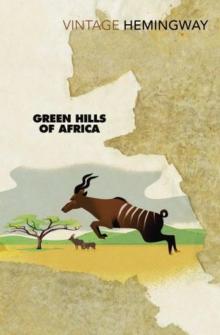 Green Hills of Africa
Green Hills of Africa The Sun Also Rises
The Sun Also Rises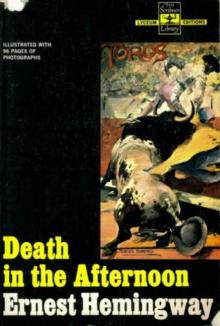 Death in the Afternoon
Death in the Afternoon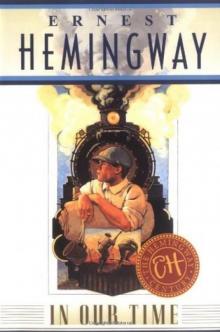 In Our Time
In Our Time For Whom the Bell Tolls
For Whom the Bell Tolls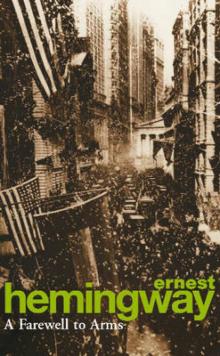 A Farewell to Arms
A Farewell to Arms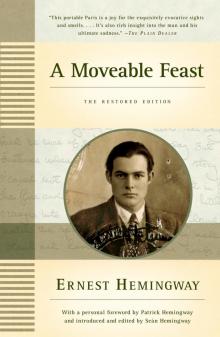 A Moveable Feast
A Moveable Feast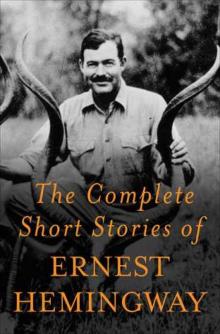 The Complete Short Stories of Ernest Hemingway
The Complete Short Stories of Ernest Hemingway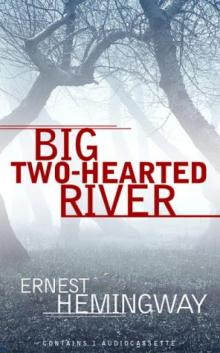 Big Two-Hearted River
Big Two-Hearted River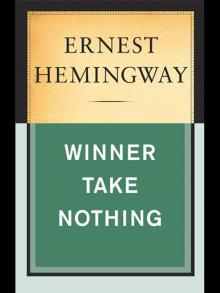 Winner Take Nothing
Winner Take Nothing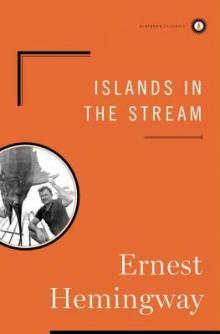 Islands in the Stream
Islands in the Stream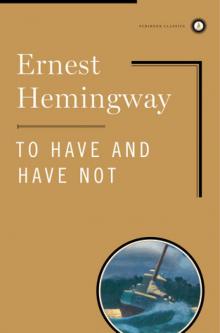 To Have and Have Not
To Have and Have Not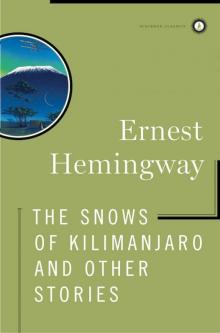 The Snows of Kilimanjaro and Other Stories
The Snows of Kilimanjaro and Other Stories Across the River and Into the Trees
Across the River and Into the Trees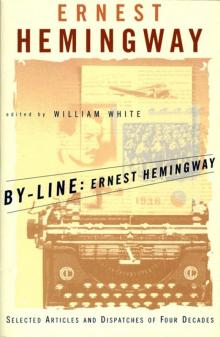 By-Line Ernest Hemingway
By-Line Ernest Hemingway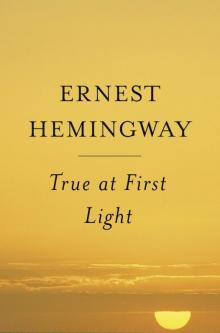 True at First Light
True at First Light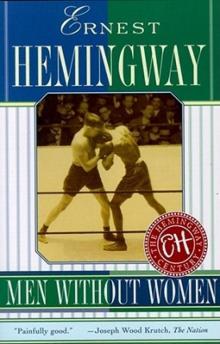 Men Without Women
Men Without Women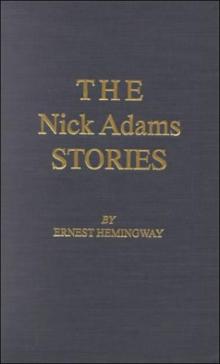 The Nick Adams Stories
The Nick Adams Stories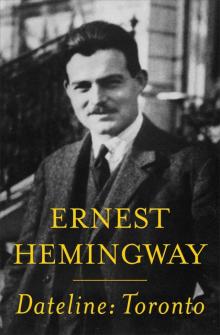 Dateline- Toronto
Dateline- Toronto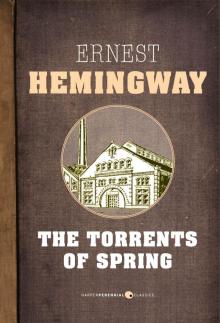 The Torrents of Spring
The Torrents of Spring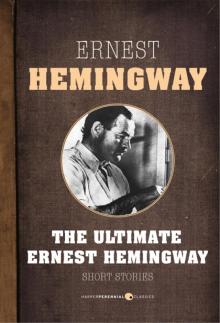 Short Stories
Short Stories